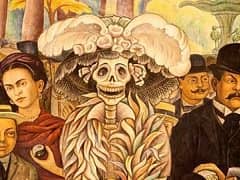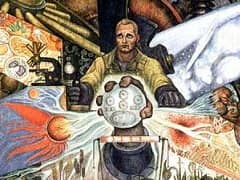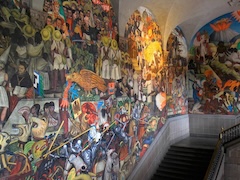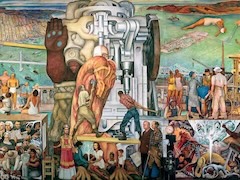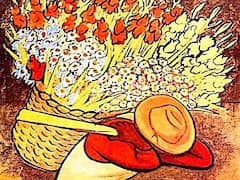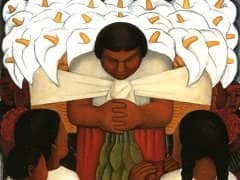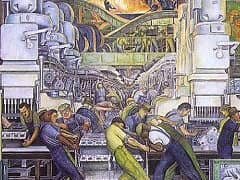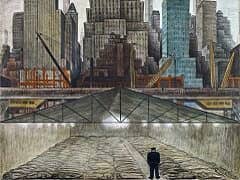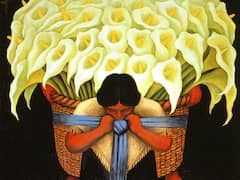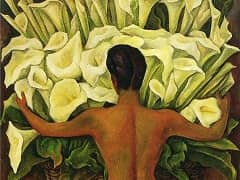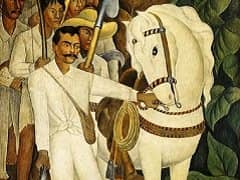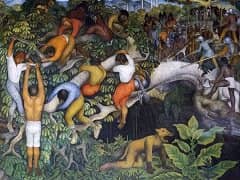Indian Warrior, 1931 by Diego Rivera
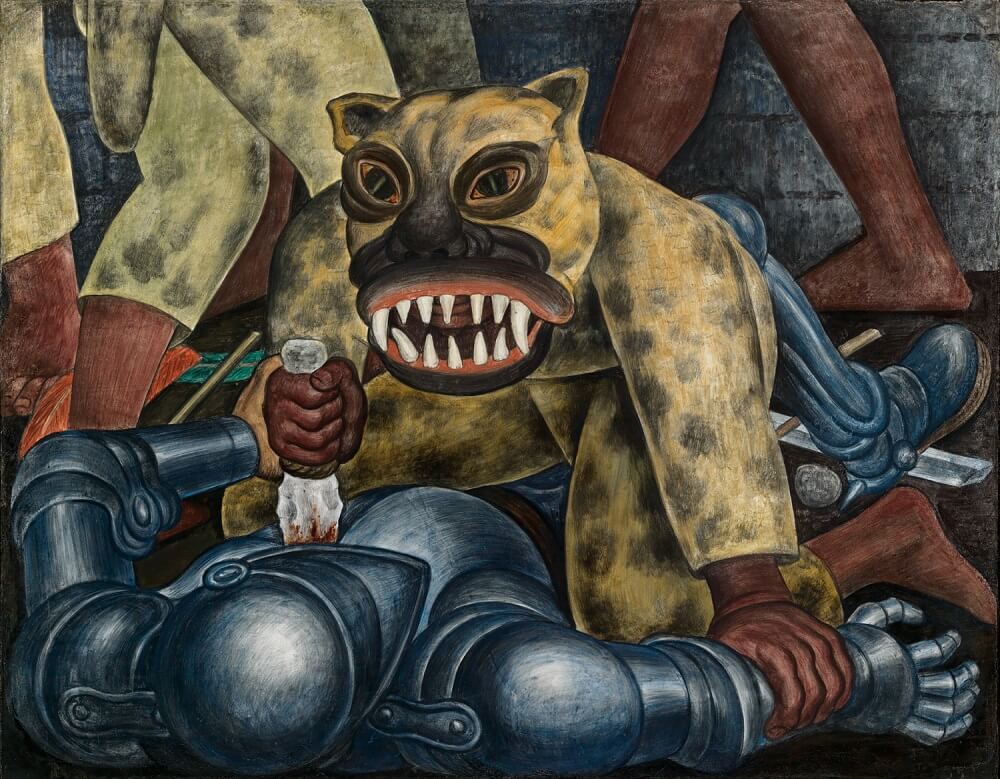
Rivera, always known for his prodigious artistic output, produced five "portable frescoes" for the MoMA exhibit in the course of just six weeks in November, working with a team of assistants in an unheated space in the
museum. (The lack of heat was to keep the plaster slabs on which the murals were painted from drying too quickly.)
Of all the panels Rivera made for The Museum of Modern Art, Indian Warrior reaches back farthest into Mexican history, to the Spanish Conquest of the early 16th century. An Aztec warrior wearing the costume of a jaguar stabs an
armored conquistador in the throat with a stone knife. The Spaniard's steel blade - an emblem of European claims to superiority - lies broken nearby. Jaguar knights, members of an elite Aztec military order, were known for their
fighting prowess; according to legend, their terrifying costumes enabled them to possess the power of the animal in battle. The panel's jarring vision of righteous violence offered a Mesoamerican precedent for Mexico's recent
revolution, as well as its continuing struggles.
Rivera's mission was, in his own words, to 'reproduce the pure basic images of my land. I wanted my paintings to reflect the social life of Mexico as I saw it, and through my vision of the truth to show the masses the outline of the future.'

